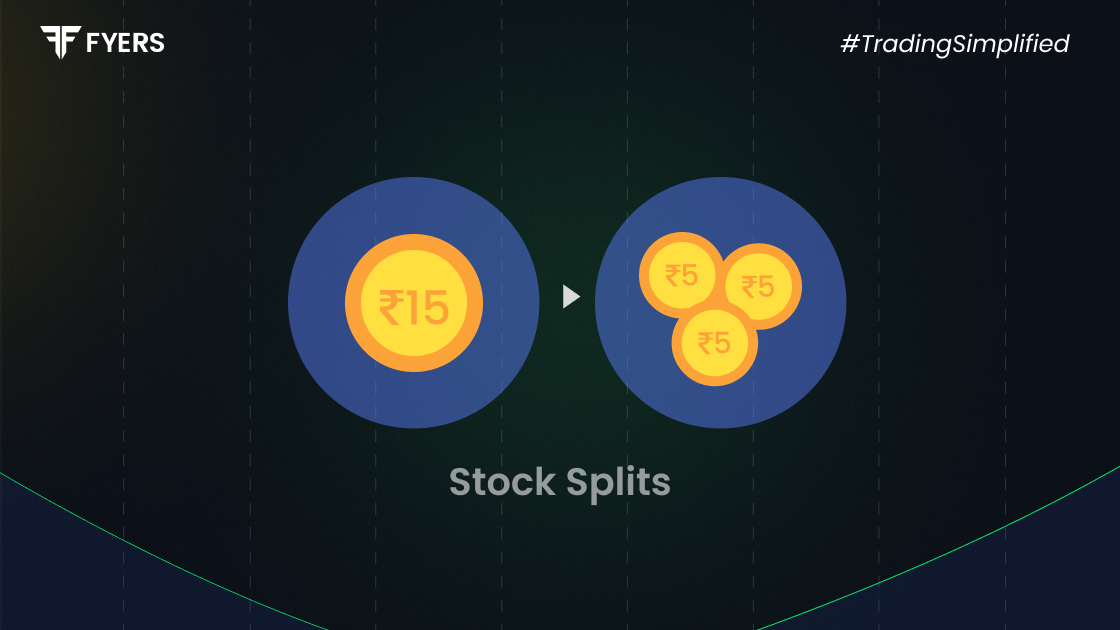

 25 Aug, 2025
25 Aug, 2025
 4 mins read
4 mins read

When a company wants to make its shares more affordable without changing the overall value of the business, it often resorts to a share split. This moves divides existing equity into smaller units, lowering the price per share but leaving the investor’s total holding unchanged. It is a common practice in financial markets and regularly makes headlines, especially when big corporations announce them.
A stock split takes place when a company increases the number of shares outstanding by issuing more shares to existing investors. For example, in a 2-for-1 split, every shareholder gets an additional share for each one they hold, while the price of each share is cut in half.
Companies typically do this to:
Improve liquidity in the market.
Make shares appear more affordable for retail investors.
Signal confidence in long-term growth.
In essence, it does not change the firm’s market capitalisation or the actual value of the investment, but it often generates excitement among investors and appears in stock split news updates.
The mathematics behind a split is straightforward. Suppose an investor owns 10 shares worth ₹1,000 each. After a 2-for-1 division, they would own 20 shares worth ₹500 each. The total investment remains at ₹10,000.
This adjustment ensures:
The proportion of ownership stays the same.
The company’s fundamentals are unaffected.
The lower price point makes the stock more accessible.
There are several variations of equity splits that investors should understand:
Forward Split – The most common type where the number of shares increases, and the price per share decreases. Example: 3-for-1 or 2-for-1 split.
Reverse Split – Instead of increasing shares, the company reduces them while raising the price per share. For instance, a 1-for-10 reverse stock split means 10 existing shares become 1 share worth 10 times the price. Companies usually do this to avoid delisting or to improve perception of value.
Unusual Ratios – Sometimes, firms opt for unique ratios like 5-for-4 or 7-for-3. These tend to be rare but serve the same purpose of adjusting price levels.
Investors often confuse a stock split bonus issue with bonus shares. While both result in shareholders owning more units, their mechanics are different:
Split of Shares: Merely divides the existing face value of shares into smaller denominations.
For example, in a bonus shares vs stock splits comparison, the former dilutes reserves, while the latter changes only the number of shares in circulation.
Announcements of equity splits often attract market attention because they are perceived as a sign of confidence. If a company has seen its share price rise significantly, a division of shares makes the stock more attractive for small investors.
This is why stock split news is closely followed in financial markets, as it may impact demand, investor sentiment, and short-term price movements.
History offers several famous cases of share splits:
Apple Inc. has conducted multiple forward splits, including a 4-for-1 split in 2020 to bring down its high share price and broaden participation.
Tesla announced a 5-for-1 split in 2020, which boosted investor enthusiasm and increased liquidity.
These examples show how share divisions can influence market sentiment, even though they do not affect a company’s intrinsic value.
Like any financial decision, there are advantages and drawbacks:
Increases market liquidity.
Makes shares affordable for small investors.
Often signals management’s optimism.
No real change in fundamentals.
In the case of a reverse split, it may indicate financial weakness.
Can create short-term volatility due to speculative interest.
A stock split is essentially a cosmetic change that alters the share price without changing ownership value. While it doesn’t boost shareholder wealth directly, it plays a key role in accessibility and perception in the stock market.
For investors, keeping track of stock split news, understanding the difference between a bonus issue and a share split, and knowing the implications of a reverse split can provide valuable context when evaluating investment opportunities.
They are when a company divides its shares into smaller units, reducing the price per share but keeping total value unchanged.
No, they don’t. They only change the number of shares and price, not the actual value.
Bonus shares are issued from reserves, while a stock split simply divides existing shares into smaller denominations.
It is when a company reduces the number of shares and increases the share price proportionally, often to avoid delisting or improve perception.
Calculate your Net P&L after deducting all the charges like Tax, Brokerage, etc.
Find your required margin.
Calculate the average price you paid for a stock and determine your total cost.
Estimate your investment growth. Calculate potential returns on one-time investments.
Forecast your investment returns. Understand potential growth with regular contributions.